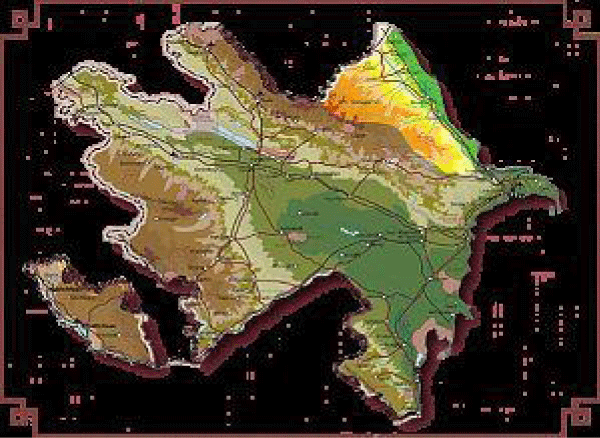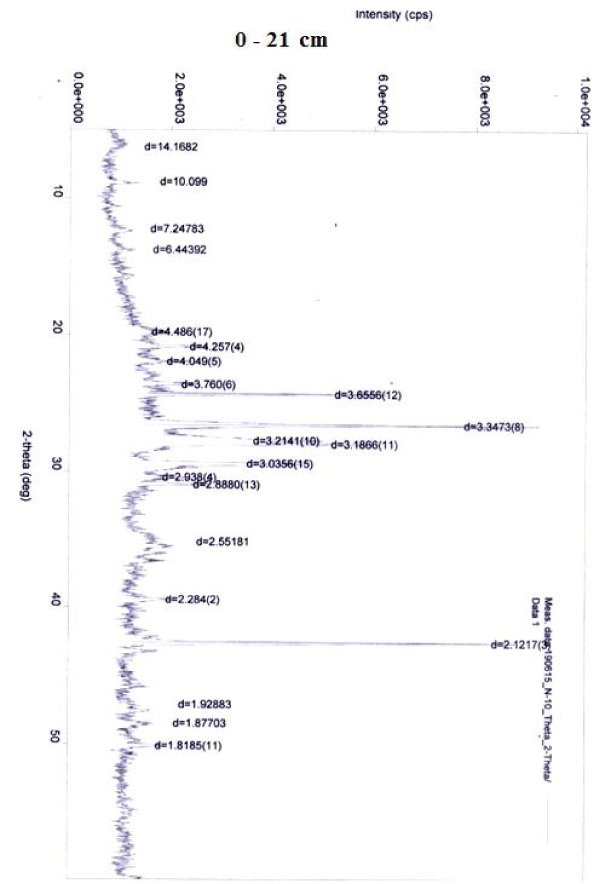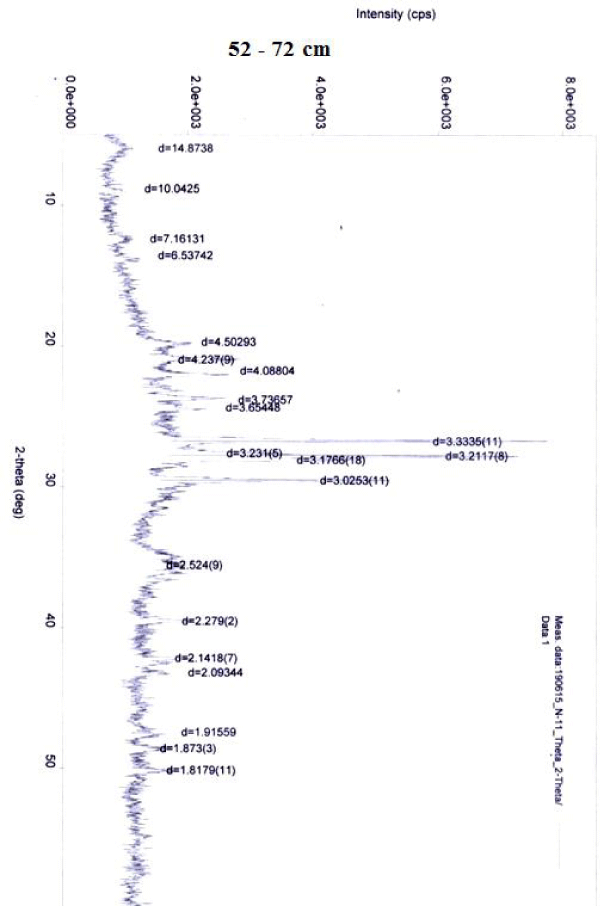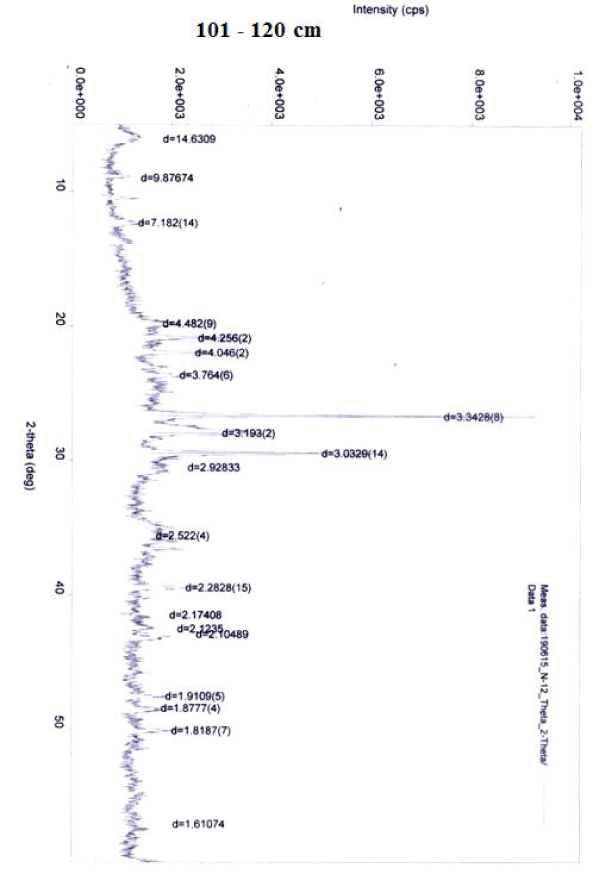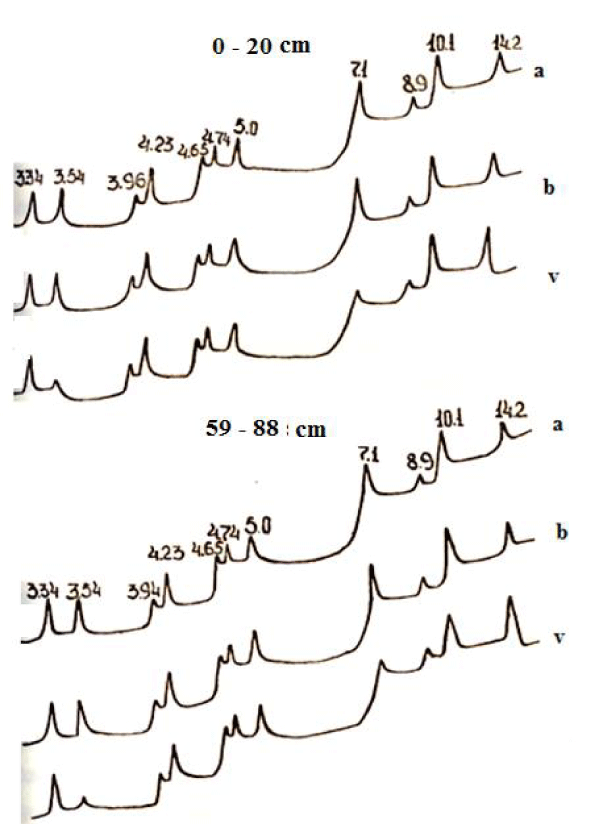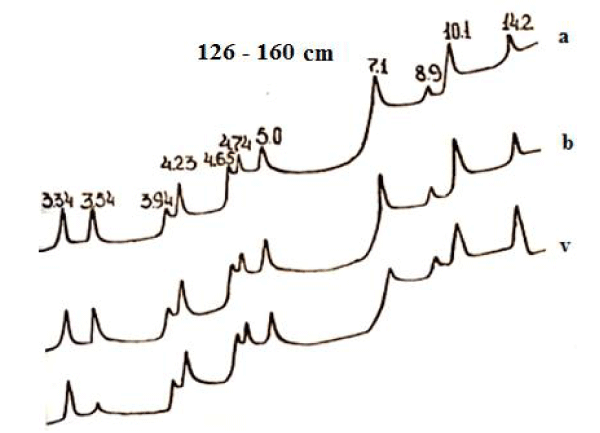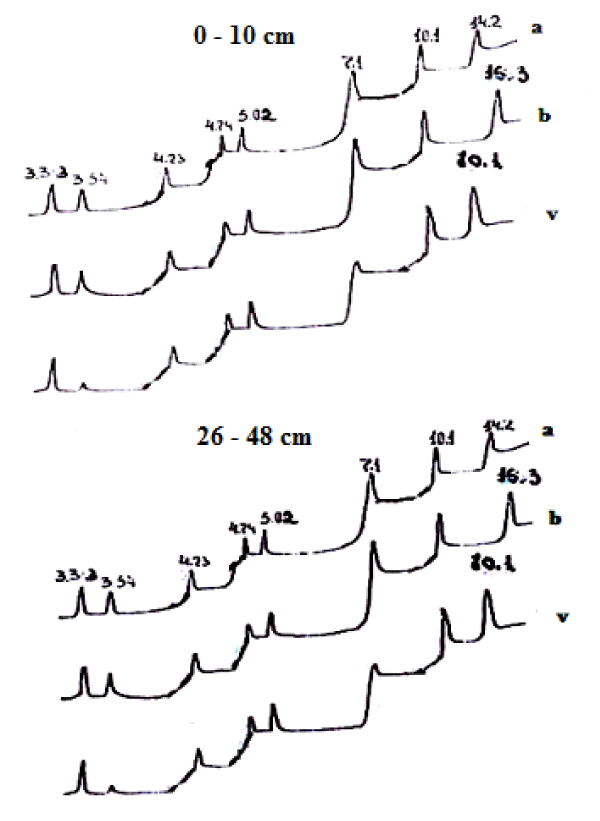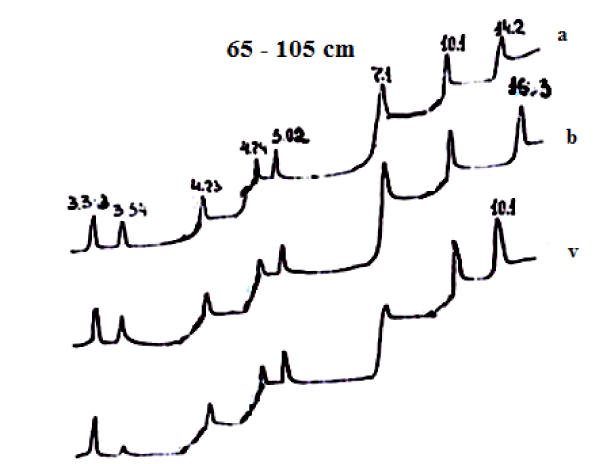More Information
Submitted: 09 March 2020 | Approved: 02 June 2020 | Published: 03 June 2020
How to cite this article: Aliyev ZH. Impact of mineralformation on restoration of the soil structure in nakhchivan AR and geographical spreading legitimacy. Ann Civil Environ Eng. 2020; 4: 038-043.
DOI: 10.29328/journal.acee.1001025
Copyright License: © 2020 Aliyev ZH. This is an open access article distributed under the Creative Commons Attribution License, which permits unrestricted use, distribution, and reproduction in any medium, provided the original work is properly cited.
Keywords: Rock; Structure; Mineral; Montmorillonite; Illite (hydroslude); Caolinite; Chloritecc
Impact of mineralformation on restoration of the soil structure in nakhchivan AR and geographical spreading legitimacy
ZH Aliyev*
Institute of Soil Science and Agrochemistry of the National Academy of Sciences of Azerbaijan, Azerbaijan
*Address for Correspondence: ZH Aliyev, Professor, Institute of Soil Science and Agrochemistry of the National Academy of Sciences of Azerbaijan, Azerbaijan, Tel: +994504242130; Email: [email protected]
The silt fractions have a great impact in soil structural formation. If the soil forming rocks don’t disturb, crush and weather, the soil forming processes on them occur weakly, the organic substances cause formation of the loamy stratums without completely turning. This mostly influences the initial soil forming layers. The reproduction minerals in these soils cause initial minerals majority by occurring weakly. If these processes occur quickly then they cause a gradual increase of the reproduction minerals and reduction of the initial minerals.
The heights of the zones where the geographical spreading of such stratums is situated depend on levels.
The soddy-meadow, mountain alluvial grey and soddy mountain meadow soils which exposed to anthropogenic impacts are strongly unlike one another for their formation characters. A section of such soils (164) was applied in the Araz coast plain part, Sadarak plain part (section 1) and soddy mountain meadow (section 18).
The section of the soddy-meadow soils (section 164) was applied in the zones near the Araz River.
The soils formed here are considered to be consisted of the deposits which are brought by the Araz River. The soilforming processes in here are very complex, possess the same structure on the genetic stratums. Sometimes these stratums are quickly washed out by forming very weakly. The forming structures cover surface of the mean and little stones, deposits.
These layers which aren’t performed by the river waters for a long time can form weak combinations of the organic substances.
These stratums can be turned into freckled-gravelly, sandy ones. Sometimes a thickness of these soils became 3-5 and 25-50 cm.
Mean inclined Sandarac plain soils (section 1) were brought by the Araz river and afterwards the Jahannamdarasi river cover their surface. Chapan and Garasu are river deposits, they form mountain-alluvial grey and bright grey-brown (chestnut) soils by influencing on soil structural restoration.
The soddy mountain meadow soils have weak metamorphosis genetic layers (section 18) by involving some high zones.
If the Arazcoastal lowland is situated at 600m above sea-level, the soddy mountain meadow soils form high parts of Nakhchivan by occupying the heights till 850-100m for the relief characters.
The soddy-meadow soils (section 164) were applied at 50 m of the north in the Diadin village of the Sharur plain, Tumasli zone from descending inclined Lowland of the Araz coast.
The soil stratums are the same for the morphogenetic structure and the blackish colours are found at the depth (35-40 cm). Only the upper layers are considered cultural-toamy stratums (Table 1).
| Table 1: Definition of some physical –chemical characters of the soddy-meadow soils in the low inclined descending plain zone. | ||||||||
| Line № | Name of the section | Depth cm |
Field humid capacity % |
Hygroscopic humidity % |
pH | Bulky weight g/cm3 |
CO2 % |
CaCO3 according to CO2- % |
| 1 | 164 Sharur plain Tumasli zone Diadin village soddy-meadow soils |
A 0-21 | 22.46 | 5.63 | 8.0 | 0.91 | 1.48 | 3.36 |
| A/B 21-50 | 15.60 | 4.08 | 8.3 | 1.25 | 4.73 | 10.73 | ||
| B150-72 | 19.32 | 3.53 | 8.1 | 1.15 | 4.36 | 9.89 | ||
| B2 72-101 | 16.61 | 2.91 | 8.3 | 1.31 | 5.56 | 12.68 | ||
| C101-120 | 23.99 | 4.00 | 8.3 | t.e | 6.58 | 14.93 | ||
The soddy-meadow soils possess a weak humid capacity according to the field humid capacity. More moisture is on upper and low layers – A 0-21 cm, C 101-120 cm, 22.41% - 23.99 %-a quantity of moisture decreases on the rest stratums.
Majority of the hydromorth state in these soils influences on development of the soddy-meadow soils.
The soddy-meadow soils are considered alkaline soils for pH-composition, the most number is on the stratums near subsoil and maternal rocks A/B 21-50, B2 72-101 and C 101-120 cm – 8.3.
The soils have mean hygroscopic moisture, and change by A 0-21 and A/B 21-50 cm, 4.08%-5.63%.
The soddy-meadow soils have a weak bulky weight from a bulky weight point of view. The most quantity reaches 1.31 g/cm3 (illuvial B2 72-101 cm).
For CaCO3 quantity the soddy-meadow soils are weak calcareous, their most number is on the illuvial B2 and C layer, but changes by 12.68% - 14.93% at 72-101 and 101-120 cm. Evidently, this is connected with the calcareous, gypsy rocks and washing regime.
The mean inclined plain zonal mountain alluvial grey soils (section 1) are created in the zone of Sadarak plain.
These formed inclined plain zone mountain alluvial grey soils are brought since ancient times, the Araz deposits are related to the Jahannamdarasi, Chapan and Garasu rivers.
The field humid capacity mountain alluvial grey soils possess a weak moisture capacity. The most quantity is on B1 – layer and forms 20.67%.
Hygroscopic humidity in these soils is weak, reaches 2.61% - 4.95%. The most reduction is on the maternal rock. C 126 – 160 cm 2,62% (Table 2).
| strong>Table 2: Some physic-chemical characters of the inclined mountain alluvial grey soils in the Sadarak plain of Nakhchivan AR. | |||||||||
| strong>Line № | strong>Name of the section | strong>Depth by/cm |
strong>Field humid capacity % |
strong>Hygroscopic moisture % |
strong>pH | strong>Bulky weightg/cm3 | strong>CO2 % |
strong>CaCO3 according to CO2- % |
strong>Humus % |
| strong> strong>1 | strong>1. Sadarak plainmountain lluvial grey soils | A 0-20 A/B 20-38 B138-59 B259-88 B/C88-26 C 126-160 |
6.80 18.22 20.67 19.82 17.91 18.54 |
4.84 4.54 4.41 4.95 4.79 2.62 |
7.9 8.1 7.8 7.9 8.0 7.9 |
1.07 1.15 1.25 1.27 t.e t.e |
8.41 8.58 7.39 6.48 6.48 6.48 |
19.1 19.5 16.7 14.7 14.7 14.7 |
1.33 1.20 0.81 0.72 0.47 0.30 |
Some majority of the hydromorph structure shows itself in the whole soil profile.
From a bulky weight point of view the mountain alluvial grey soils are considered non-hardened soils – 1.07-1.27g/cm3.
Change of the bulky weight in the mountain alluvial grey soils in such composition depends on structure of the alluvial original rocks and distribution legitimacy
These soils are considered weak alkaline soils for pH content, change by 7.9-8.1.
Humus substance is little in these soils - 0.30-1.33%. The most number is on the upper alluvial stratums- A 0-20 cm – 1.33%.
More aridity of the climate and falling atmospheric precipitations causes quickly mineralization of the organic substance, sometimes its formation.
The mountain alluvial grey soils are weak for CO2 changes by 8.41% - 8.58% only on the upper layers.
CaCO3 number is more only on the upper stratums and changes by 19.1% - 19.5% in A 0-20 and A/B 20-38 cm and diminishes on the low layers.
The soddy mountain meadow soils spread in the high zones of Nakhchivan AR and possess weak metamorphosed stratums (Table 3).
| Table 3: Some physic-chemical characters of the soddy mountain meadow soils in the Shahbuz region of Nakhchivan AR. | ||||||||
| Line № | Name of the section | Depth by/cm |
Field humid capacity % |
Hygroscopic moisture % |
Bulky weight g/cm3 |
Co2 % |
CaCO3according to Co3 % |
Humus % |
| 3 | 18.Shahbuz region Gejazur zone soddy mountain meadow soils | A0-10 A/B10-26 B126-48 B248-65 B/C 65-78 C 78-105 |
21.04 24.08 24.96 21.22 20.84 17.00 |
6.99 8.66 8.42 8.51 7.71 5.06 |
t.e “____” “____” “____” “____” “____” |
1.00 1.00 0.37 0.75 0.60 0.45 |
2.28 2.28 0.85 1.71 1.85 0.85 |
3.07 3.31 2.06 1.91 1.21 1.02 |
Possessing mean humid capacity the soddy mountain meadow soils are mostly on the illuvial stratums and change by 24.08% - 24.95% in A/B and B1 10-26 and 26.48 cm. Their number reaches 17.00% only on the maternal rocks.
Somewhat reduction of the field moisture supply on the maternal rock depends on a character of the rocks which form soddy mountain meadow soils.
Increase of the field humid capacity on the illuvial layers depend on gradually washing out of silt fractions from upper layers and otherwise climatic factors.
Majority of hygroscopic moisture under hydromorph condition and mainly spreading on the illuvial stratums is connected with the somewhat majority of the atmospheric precipitations and gradual spreading of the silt particals, A/B, B1 and B2 10-26; 26-48 and 48-65 cm changes 8.42% - 8.66%.
Humus in these soils is somewhat more, A 0-10 and A/B 10-26 cm changes by 3.07% - 3.31% on the alluvial upper layer and its quantity reaches C 78-105cm 1.02% on the maternal rocks.
For a quantity of CO2 and Ca CO3 the soddy mountain meadow soils are somewhat weakly provided calcareous soils.
This is a character peculiar to the soddy mountain meadow soils, depends on atmospheric precipitations and rocks. The physic-chemical features occurring in soils show their impact in mineral formation.
The modern mineralogical compositions of the soddy meadow soils strongly differ from other soils (Figure 1.1-1.3).
Figure 1.1: Modern mineralogical content of soddy- meadow soils in the Tumasli zone of the Sharur region, Nakhchivan AR.
Figure 1.2: Modern mineralogical composition of the soddy-meadow soils in the Diadin village of Tumasli in the Sharur district, Nakhchivan AR.
Figure 1.3: Modern mineralogical structure of the soddy-meadow soils in the Diadin village of Tumasli from the Sharur region, Nakhchivan AR.
The consequences from an apparatus “Mini flex-600” show that montmorilonite, illite (hydroslude) and caolinite from high dispersion minerals are mostly spread.
The other high dispersion minerals aren’t reflected in these soils.
The mostly exceeding minerals are initial minerals.
Montmorillonite mineral changes by 11.3% - 16.0% in soddy-meadow soils, they are mostly on the upper layers.
Illite (hydroslude) mineral changes by 4.2% - 7.3% in the soddy-meadow soils.
Majority of high dispersion minerals on the upper layers is connected with the content of the debris and precipitated silt fractions.
This depends on conditions mostly possessing an arid climate, Caolinite mineral in these soils changes by 9.2% - 11.3%.
Their most quantity is on the maternal rocks, where the weathering – soil forming processes quickly occur, there they show their influence on formation of illite (hydroslude) and montmorillonite combinations.
From the initial minerals - d- kvarts (SiO2) changes by 19.3-20.5, field spat- 9.6% - 16.1%, calcite – (CaCO3) – 9.8% - 17.8%, hematite (Fe2O3) – 3.4% - 6.7%, NaCl – 1.4% - 6.4%, volcano ash – 10.2% - 15.2%.
The high dispersion minerals decrease, the initial minerals increase.
From illite (in hydroslude), chlorite, weak caolinite and mixed-stratified combinations are illite (in hydroslude) combination.
Illite combinations (in hydroslude) are from illite (in hydroslude), chlorite, weak caolinite and mixed-stratified combinations in the silt fractions mostly spreaded in the mountain alluvial grey soils of the Sadarak plain inclination (Figure 1.4,1.5)
Figure 1.4: Definition of roentgendifractograms in silt fractions from mountain alluvial grey soils in the Sadarak plain, Nakhchivan AR < 0.001 mm (Section 1). a) In totally arid state; b) While being saturated with glycerin; v) While heating 550 0C.
Figure 1.5: Definition of roentgendifractograms in silt fractions from mountain alluvial grey soils in the Sadarak plain, Nakhchivan AR. < 0.001 mm (section1). a) In totally arid stat; b) While being saturated with glycerin; v) While heating 550 0C.
From the mostly spreaded initial minerals are: d- kvartz, field shpat and zeolite.
The illite (hydroslude) mineral in the mountain alluvial grey soils widely spread over the whole profiles and shows itself on the following peaks (1,00 nm, 0.500 nm, 0.334 nm).
Chlorite mineral is in these soils, mostly on upper and middle stratums, it reaches 1.400 nm, 0.710 nm, 0.354 nm on the peaks. It weakens and shows its indications on the peaks, reaches 1.560 nm while being saturated with glycerin.
Caolinite mineral changes its peaks in silt fractions – 0.710 nm, 0.358 nm.
Illite (in hydroslude), caolinite, weak montmorilinite are found in silt fractions of the soddy mountain meadow soils (Figures 1.6-1.7).
Figure 1.6: Definition of roentgendifractograms in silt fractions from soddy mountain –meadow soils, Nakhchivan AR. a) in totally arid situation; b) while being saturated with glycerin; v) While heating 550 0C.
Figure 1.7: Definition of Roentgendifractograms in silt fractions of the soddy mountain meadow soils, Nakhchivan AR. < 0.001 mm (Section 17). a) In totally arid situation; b) While being saturated; v) While heating 550 0C.
Majority of illite on upper, middle and low stratums doesn’t change its peaks while being saturated with glycerin and heated till 550 oC.
Caolinite mineral loses its initial peaks and sometimes shortens while heating 550 oC. The peaks of caolinite mineral reach 0.700 nm, 0.358 nm by showing itself in silt fractions.
Minority of montmorillonite mineral and increase on low layers causes formation of the montmorillonite-illite ( hydroslude) combinations on mixed-stratified combinations.
Initial minerals are much in these soils and mainly consist of andesite, basalt, field shpat, kvartz and sarpentinite.
For the geographical spreading legitimacy the soddy mountain meadow and soddy-meadow soils are somewhat initial soils from location features standpoint, they cause somewhat decrease of the high dispersion minerals, superiority of the initial minerals.
Somewhat increase of the high dispersion minerals in silt fractions of the mean inclined plain zone soils is a reason for a gradual decrease of the initial minerals. This influences formation of the soil minerals.
When the soil profile is wholly formed, then a process of high dispersion mineral formation quickens. But the initial minerals formation weakens.
If the soddy mountain meadow, soddy-meadow soils in the both zones consist of the initial minerals majority, then they cause majority of the high dispersion minerals and decrease of the initial minerals in the mean plain inclined soils.
1. The soils selected for bioclimatic features, formed in Nakhchivan AR differ from one another. The soddy mountain meadow soils have high humus -3.31%, high hygroscopic humidity 5.06% - 8.51%, high field moisture capacity 17.00% - 24.96%, but the mean inclined plain zone mountain alluvial grey soils possess weak humus 1.33%, weak bulky weight 1.07-1.27 g/cm3, weak field humid capacity 6.80% - 20.67%.
2. They cause increase of the high dispersion minerals in mean inclined plain zone soils and diminish, the initial minerals possess superiority in soddy mountain meadow and soddy- meadow soils.
3. If the soil forming process is ancient and morphogenetic layers wholly develop the silt fractions possess superiority in those soils.
- Avakulov VV. Initial soils in the natural and anthropogenic ecosystems. Author synopsis of thesis. dis doct biol N Toliati. 2012; 48.
- Abasov MA. Geomorphology of Nakhchivan ASSR. Baku “Elm” (Science). 1970; 147.
- Andronitskov VL, Lebedeva IN, Toikonochov VD, Papkova EI. Problems in anthropogenic evolution of soil cover USSR. // Col. Anthropogenic and natural evolution.
- Gerasimov MI, Gubi SV, Shoba SA. Soil micromorphology in the natural zones of USSR. Pushino. 1992: 215.
- Gorbunov NI. Mineralogy and physical chemistry of soils, M., “Nauka” (Science). 1978; 293
- Gradusov BP. Mixed- stratified minerals in soils. M. “Nauka” (Science). 1976; 126
- Dobrovolsky VV. Composition of fine earth in friable soil forming rocks from Eastern European plains and genesis. Soil Sci. 2005; 3: 345-355.
- Kurochkina GI, Pinsky DA, Fedotov GN, Khainos I, Sokolovsky Z, et al. Change of the structural organization of precipitation in gleyey minerals and soils under polyelectrolyte impact. Soil Sci. 2013; 8: 993-1004.
- Ivanov GI. Soil formation in the south of Far East. M. “Nauka” 1976; 200.
- Sokolova TA, Tolpeshta IL, Sizemskaya ML, et al. Soil formation initial stage and bottom of the artificial decrease in thirty year growth under semi desert condition. Soil science, 2013; 8: 899-910.
- Sokolova TA. Fundamental leadership on soil mineralogy. Soil science. 2003; 8.
- Skvortsova EE, Morozov DR. Micromorphometric classification and diagnostics of the first space structure of soils.Soil science. 1993; 6: 49-56.
- Chidzhikova NP, Verkhovets NA, Vladichensky AS. Conduct of the gleyey fraction components in the fashion ecosystems of lizimetres.Soil Science. 2006; 9: 1088-1097.
- Chidzhikova NP, Kharitonova GV. Differentation of the laminated silicates and biogenic silicon oxide in the meadow whitish Middle Amur Lowland. Soil Science.2013; 8: 80-993.
- Chidzhikova PN. Map of the soilforming rocks. European part of USSR. Composed in the museum of agriculture. MSU. 1:4000000, M.1969.
